7 Simple Steps to Organised Wardrobe Bliss
Follow these organising rules to whip your wardrobe into shape and say goodbye to clutter
Fed up with facing a tangle of T-shirts? Sick of scrabbling around for a clean pair of socks? These rules will help you transform your wardrobe from a messy jumble into a gleaming model of efficiency.
2. Sort by type…
Take everything out and place your clothes in piles according to the type of garment and/or level of formality. For example, group all knitwear together then sort by type, from lightweight to heavyweight, or from office wear to casual outdoor layers.
Separate formal work shirts from casual weekend shirts, group all trousers together and sort dresses by formal to casual. T-shirts and tops might also need to be sorted from casual to smart and from long-sleeved to short-sleeved.
Take everything out and place your clothes in piles according to the type of garment and/or level of formality. For example, group all knitwear together then sort by type, from lightweight to heavyweight, or from office wear to casual outdoor layers.
Separate formal work shirts from casual weekend shirts, group all trousers together and sort dresses by formal to casual. T-shirts and tops might also need to be sorted from casual to smart and from long-sleeved to short-sleeved.
3. …Then sort by colour
Once you’ve sorted your clothes into garment types, the next stage is to sort by colour. Within each clothing type, arrange items from dark to light, through the colours of the rainbow.
Want to take it up a notch? If you’re super-organised, you might also want to sort your patterned items into stripes, florals and so on, or you could place them into the colour order by the dominant colour within the pattern.
Need an expert to help you organise your home? Find a professional storage designer and organiser near you on Houzz for customised solutions
Once you’ve sorted your clothes into garment types, the next stage is to sort by colour. Within each clothing type, arrange items from dark to light, through the colours of the rainbow.
Want to take it up a notch? If you’re super-organised, you might also want to sort your patterned items into stripes, florals and so on, or you could place them into the colour order by the dominant colour within the pattern.
Need an expert to help you organise your home? Find a professional storage designer and organiser near you on Houzz for customised solutions
4. Ask yourself one question
Now you’ve started to get some order, it’s time for a ruthless edit. Ask yourself one simple question: if you saw this item in a shop today, would you buy it? If the answer is ‘no’ or ‘maybe’, then it probably needs to go.
It’s easy to hang on to clothes for sentimental reasons, or because you think you ‘might’ wear them one day. But if you haven’t worn something for a year or so, and if you wouldn’t buy it again today, then it doesn’t need to take up valuable space in your wardrobe.
Now you’ve started to get some order, it’s time for a ruthless edit. Ask yourself one simple question: if you saw this item in a shop today, would you buy it? If the answer is ‘no’ or ‘maybe’, then it probably needs to go.
It’s easy to hang on to clothes for sentimental reasons, or because you think you ‘might’ wear them one day. But if you haven’t worn something for a year or so, and if you wouldn’t buy it again today, then it doesn’t need to take up valuable space in your wardrobe.
5. Subdivide
Now it’s time to put everything back in your wardrobe, so you’ll need to reconsider the layout of the space. A single rail inside your wardrobe isn’t likely to cut the mustard, so see if you can squeeze in an extra, lower (or higher) rail to divide the vertical space in two.
Alternatively, buy a shelving system that fits inside your wardrobe to create a patchwork of different-sized sections. You can then customise it to suit your exact needs.
10 Steps Toward Anarchy-Free Mornings
Now it’s time to put everything back in your wardrobe, so you’ll need to reconsider the layout of the space. A single rail inside your wardrobe isn’t likely to cut the mustard, so see if you can squeeze in an extra, lower (or higher) rail to divide the vertical space in two.
Alternatively, buy a shelving system that fits inside your wardrobe to create a patchwork of different-sized sections. You can then customise it to suit your exact needs.
10 Steps Toward Anarchy-Free Mornings
6. Fold everything that doesn’t need a hanger
Soft T-shirts, casual tops and most knitwear can be neatly folded and placed on shelves within your wardrobe or an adjacent chest of drawers. This will clear hanging space for items that need it, such as jackets, shirts and dresses.
The key to keeping these piles of folded clothes organised is to fold them all uniformly, with the sleeves and hems tucked neatly inside. You will then have a clean row of organised items facing you when you open the cupboard or drawer, rather than a toppling tower with sleeves trailing down.
Soft T-shirts, casual tops and most knitwear can be neatly folded and placed on shelves within your wardrobe or an adjacent chest of drawers. This will clear hanging space for items that need it, such as jackets, shirts and dresses.
The key to keeping these piles of folded clothes organised is to fold them all uniformly, with the sleeves and hems tucked neatly inside. You will then have a clean row of organised items facing you when you open the cupboard or drawer, rather than a toppling tower with sleeves trailing down.
7. Group accessories
Last but not least, turn your attention to your accessories. Treat scarves, bags and shoes as you would your clothes and store anything that isn’t seasonal out of sight. Then fold, colour-code and organise your accessories by type before placing them back on shelves or in dedicated storage boxes on the floor of your wardrobe.
Clear boxes are useful for seeing what’s inside at a glance, and a small storage unit like this one with pull-out drawers would make it even easier to access items.
Your turn
What are your golden rules for organising your clothes and accessories? Let us know in the Comments below, like this story, save your favourite images, and join the conversation.
More
Need more organisation inspiration? Look no further than 7 Ways to Make Life Easier… and the Spare Change Secret
Last but not least, turn your attention to your accessories. Treat scarves, bags and shoes as you would your clothes and store anything that isn’t seasonal out of sight. Then fold, colour-code and organise your accessories by type before placing them back on shelves or in dedicated storage boxes on the floor of your wardrobe.
Clear boxes are useful for seeing what’s inside at a glance, and a small storage unit like this one with pull-out drawers would make it even easier to access items.
Your turn
What are your golden rules for organising your clothes and accessories? Let us know in the Comments below, like this story, save your favourite images, and join the conversation.
More
Need more organisation inspiration? Look no further than 7 Ways to Make Life Easier… and the Spare Change Secret





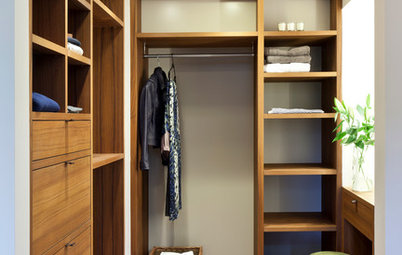

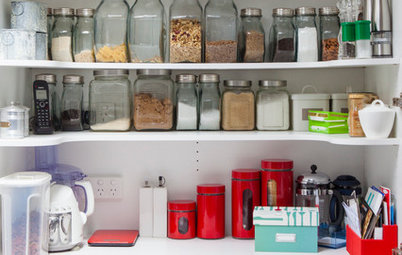





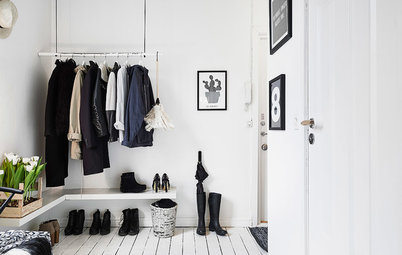
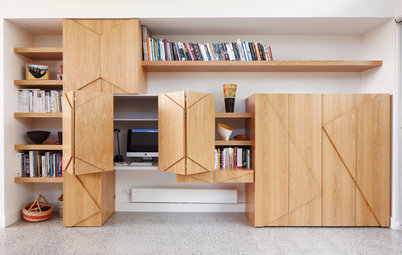
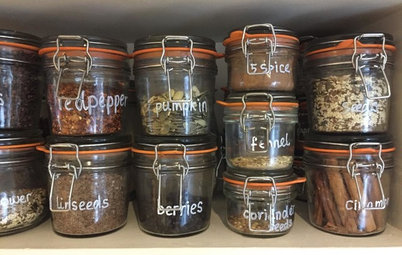





The first step on the road to wardrobe efficiency is to take out anything that isn’t seasonally appropriate. You don’t need to have summer clothes accessible in winter and vice versa, so get these out of the way to slim down the number of items you’re attempting to sort through every morning.
Store off-season clothes in lidded boxes under the bed or on top of the wardrobe to keep them dust-free, then step back and assess your wardrobe more clearly.